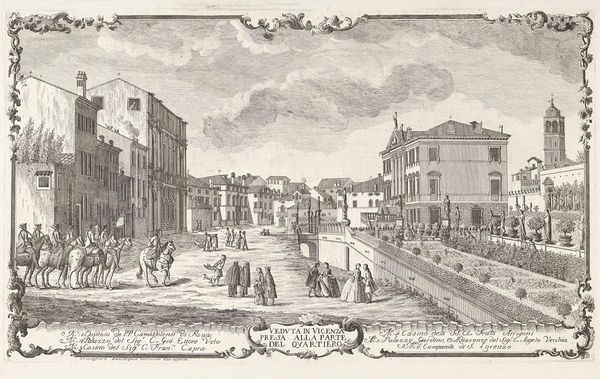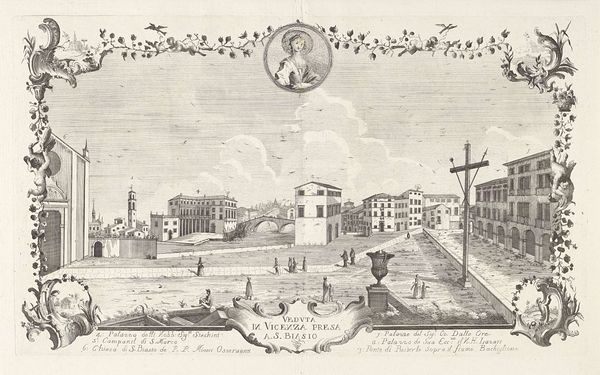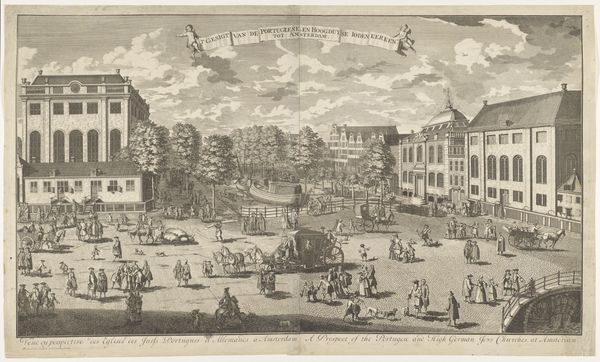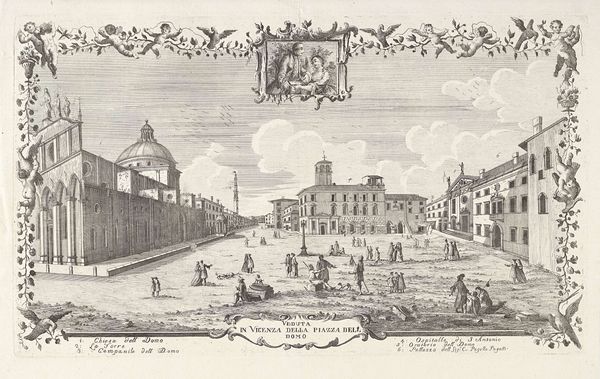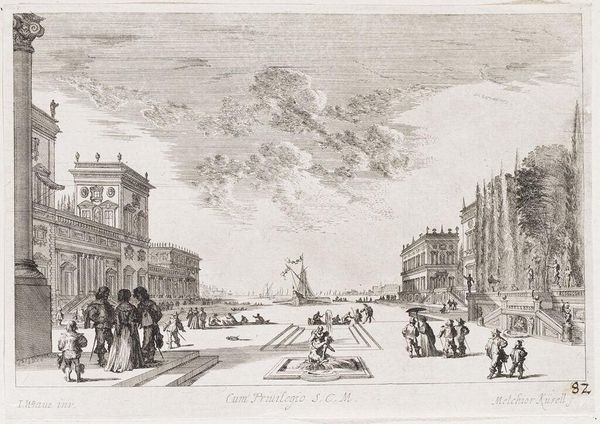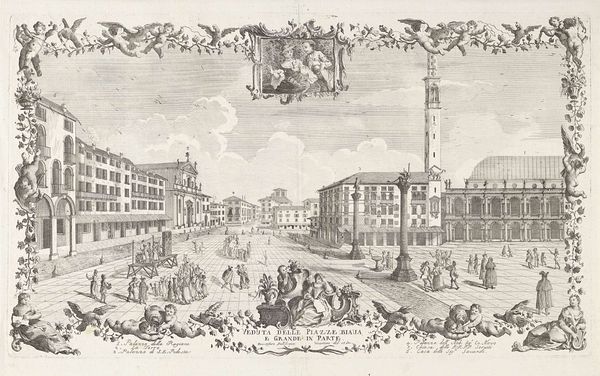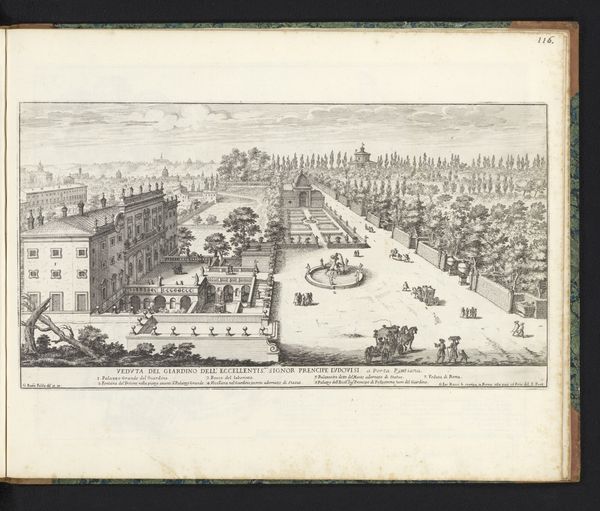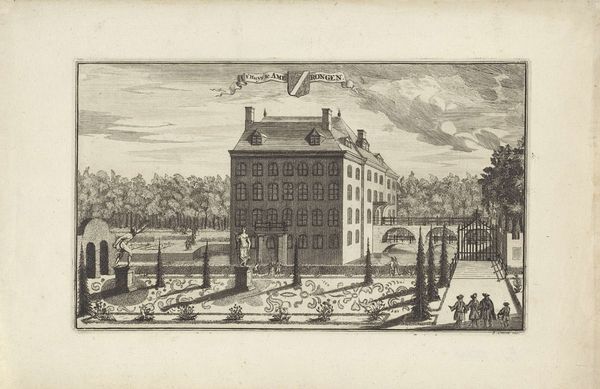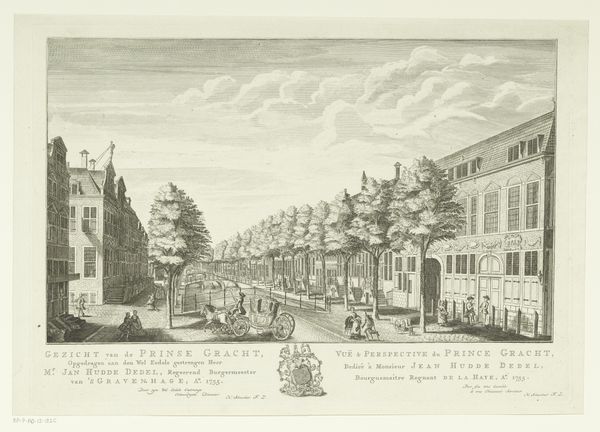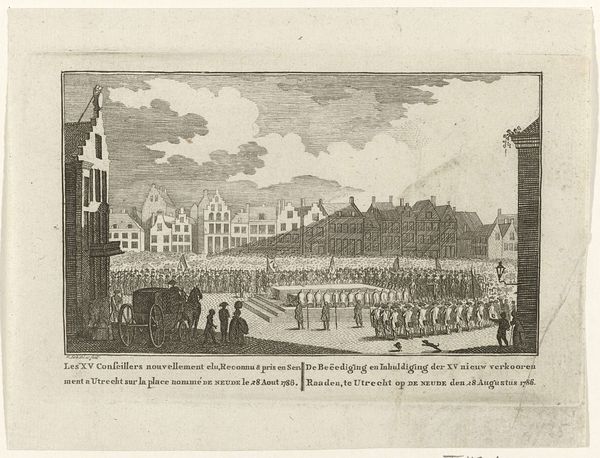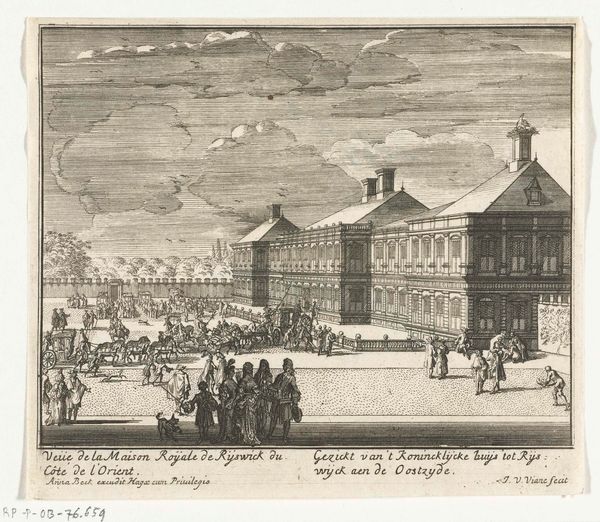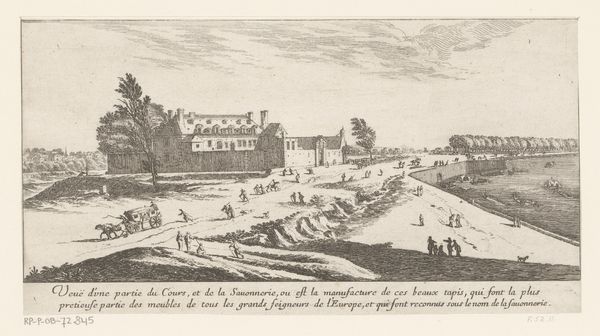
drawing, print, etching, engraving
#
drawing
# print
#
pen sketch
#
etching
#
old engraving style
#
landscape
#
cityscape
#
italian-renaissance
#
engraving
Dimensions: height 367 mm, width 617 mm
Copyright: Rijks Museum: Open Domain
Editor: Here we have Cristoforo dall' Acqua’s "Isola Tolta in Vicenza," an etching and engraving from the late 18th century. The scene is remarkably detailed; it gives us a wide view of a bustling city square. What catches my eye is the rigid social hierarchy displayed here. What do you see in this piece? Curator: You've touched on something critical. While ostensibly a cityscape, it’s also a carefully constructed visual argument about power and privilege. Note how the artist meticulously renders the architecture, assigning each building a numerical label for identification. This almost scientific approach implies objectivity, yet it subtly reinforces the authority of the ruling class by showcasing their properties and social spaces. How does the vast open space of the "Isola Tolta," literally a 'taken island', contribute to this power dynamic, do you think? Editor: It almost feels like a stage, a deliberate space created for the elite to parade and be seen, further emphasizing their dominance, while restricting access to the lower classes, who are relegated to the fringes. Curator: Exactly. Consider the historical context – Venice, during this period, faced increasing social stratification. Dall'Acqua's print, while appearing to simply depict the city, implicitly celebrates the existing social order, normalizes inequality and becomes complicit with that structure. The 'island' isn't just geographically defined; it’s socially constructed, an exclusive space 'taken' from the populace. Who benefits from that erasure? Who controls the narrative? These are questions the image forces us to ask. Editor: I never would have thought a cityscape could contain such powerful social commentary. This has completely reshaped my perspective! Curator: It is about thinking how even seemingly straightforward landscapes and cityscapes can act as cultural documents which solidify political ideologies. This artwork prompts us to consider how visual representation always reflects broader issues concerning social inequality.
Comments
No comments
Be the first to comment and join the conversation on the ultimate creative platform.
